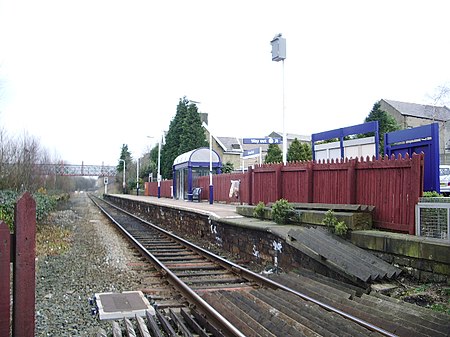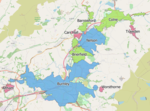Brierfield railway station
1849 establishments in EnglandBrierfield, LancashireDfT Category F2 stationsFormer Lancashire and Yorkshire Railway stationsNorth West England railway station stubs ... and 5 more
Northern franchise railway stationsPages with no open date in Infobox stationRailway stations in Great Britain opened in 1849Railway stations in the Borough of PendleUse British English from December 2016

Brierfield railway station serves the town of Brierfield, Lancashire, England and is on the East Lancashire Line 2+1⁄4 miles (3.6 km) east of Burnley Central railway station towards Colne (the terminus). The station is managed by Northern, who also provide all passenger trains serving it. The station is unstaffed and only has basic facilities (no waiting room, just a shelter and a modern ticket vending machine), though there are passenger information screens, timetable posters and a long-line PA system in place to provide train running information. The platform has step-free access from the adjoining street.
Excerpt from the Wikipedia article Brierfield railway station (License: CC BY-SA 3.0, Authors, Images).Brierfield railway station
Glen Way, Borough of Pendle Brierfield
Geographical coordinates (GPS) Address Nearby Places Show on map
Geographical coordinates (GPS)
| Latitude | Longitude |
|---|---|
| N 53.825 ° | E -2.237 ° |
Address
Glen Way
Glen Way
BB9 5NH Borough of Pendle, Brierfield
England, United Kingdom
Open on Google Maps





